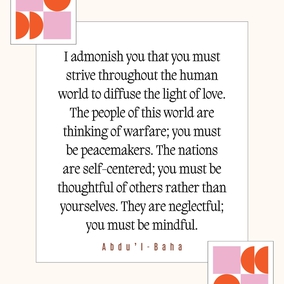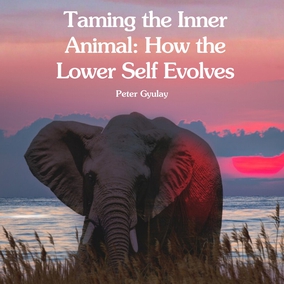The views expressed in our content reflect individual perspectives and do not represent the authoritative views of the Baha'i Faith.
Here’s a fascinating quote from the Baha’i teachings that has interested me for a long time. What do you make of it?
Man is the supreme Talisman. Lack of a proper education hath, however, deprived him of that which he doth inherently possess. – Baha’u’llah, Gleanings from the Writings of Baha’u’llah, p. 259.
To Baha’is, this quote is rather well known, and gets used often in discussions about the value Baha’is place on education. What interests me most about this quote is the word ‘Talisman.’ What does Baha’u’llah mean by this word?
I recently came across another idea from a very disparate field which might shed some light on that question. Recently the molecular geneticist Christoph Adami proposed a new definition for information as a correction to Claude Shannon’s (the father of information theory) definition of information. Adami’s new idea seems to fit well with the ancient concept of a Talisman.
The standard English definition of Talisman is “an object, typically an inscribed ring or stone, that is thought to have magic powers and to bring good luck.” However this word originates from the mid-17th century, and has roots in the Arabic word ṭilsam, which apparently is an alteration of late Greek telesma (meaning completion, religious rite); from telling (complete, perform a rite); from telos, which means ‘result, end.’
Digging a bit more into the Islamic and particularly the Shi’ite understanding of this word, a very rich and deep type of cosmology underlies it. In this context a Talisman can be understood as a representation or model of a ‘higher’ object. With this model one can predict or attain some gnosis about the higher object. In this context the statement that humans are “a supreme Talisman” might be seen as a restatement of the idea of “man made in God’s image,” in that within them the absolute is modeled or imaged. To that end, Baha’u’llah quotes Imam Ali in his mystical work The Seven Valleys: “Doth thou reckon thyself only a puny form when within thee the universe is folded?” – p. 34.
In Shaykhi and Bab’i theology out of which the Baha’i Faith grew, the relationship to the divine has at times been cast in terms of successive recursions of Talismans. So the prophet is a Talisman for God, the Imam or successor to the prophet is a Talisman for him, the true follower a Talisman of the Imam. This progression of reflection or Talismans, continues down through the grades of existence, through the animal, plant and mineral levels of existence. As a result, everything bears the imprint of the divine. Baha’u’llah wrote:
He hath entrusted every created thing with a sign of His knowledge, so that none of His creatures may be deprived of its share in expressing, each according to its capacity and rank, this knowledge. This sign is the mirror of His beauty in the world of creation. – Gleanings from the Writings of Baha’u’llah, p. 262.
In searching for a good definition of the term ‘information,’ Adami defines it as the “ability to make a prediction better than chance.” This definition, in my opinion, represents an important advance over the standard Shannon definition, that relates entropy to information. Adami’s new definition gives us a way to distinguish useless noise from actual ‘information,’ which has value.
Also, this definition builds an effective bridge to biology. This type of information is the most important commodity of the evolutionary process. From this perspective, the better an organism can predict the behavior of its environment and act on that information, the better chance it has of passing on its genes. One could actually generalize this concept to describe the process of evolution and life as a process of reflecting the environment more and more faithfully. Fundamentally, living systems develop models of their environment and make predictions that allow them to preserve and propagate. Genetic and evolutionary success, in other words, goes to those organisms who best use information.
On one level the actions of science which revolve around the construction of better and better models of the physical reality, might be seen as embodying the very essence of the evolutionary process and perhaps life itself. Further, these models are judged ultimately on their predictive power. The whole body of science itself could be couched in terms of the production of Adami ‘information.’ Interestingly, this is not too dissimilar from the ancient use of a Talisman, where models of the universe are constructed to enable the user to make predictions or attain some gnosis about reality. From this point of view, the work of science and the process of life and evolution could be viewed as talismanic work.
Returning to Baha’u’llah’s quote, the process of education and its operation on an individual can now be viewed as igniting the inherent information-generating power of the human mind and spirit. Thus education helps move a soul to a state where it more faithfully reflects the realities of the universe—and ultimately God.
















Comments
Sign in or create an account
Continue with Googleor